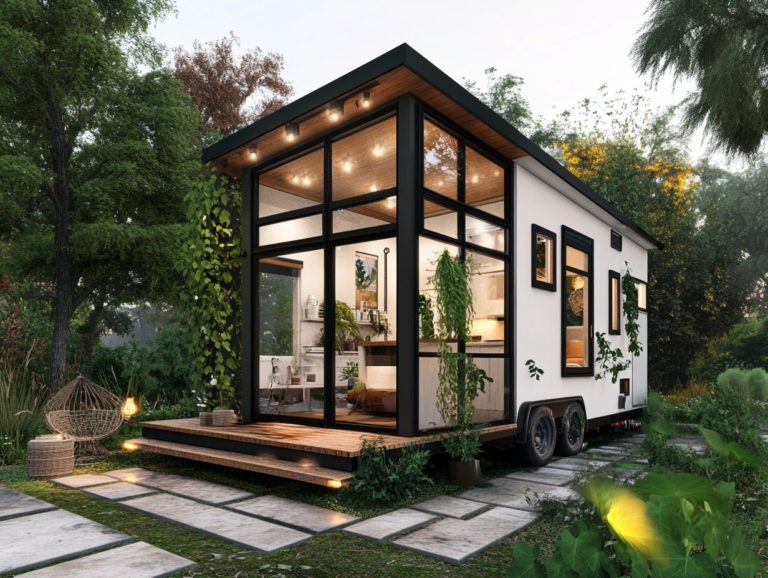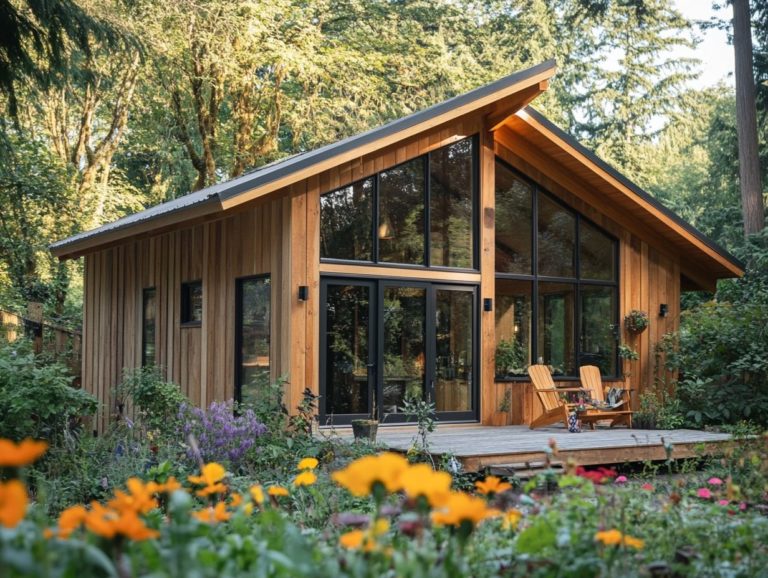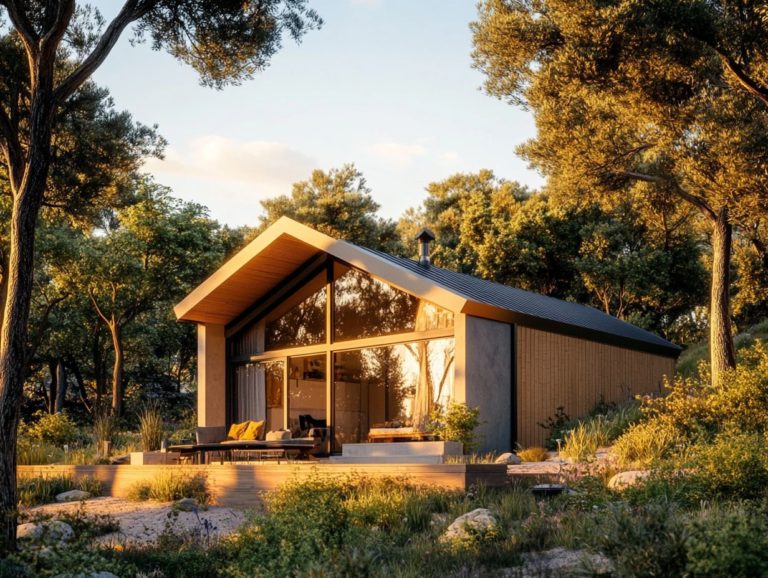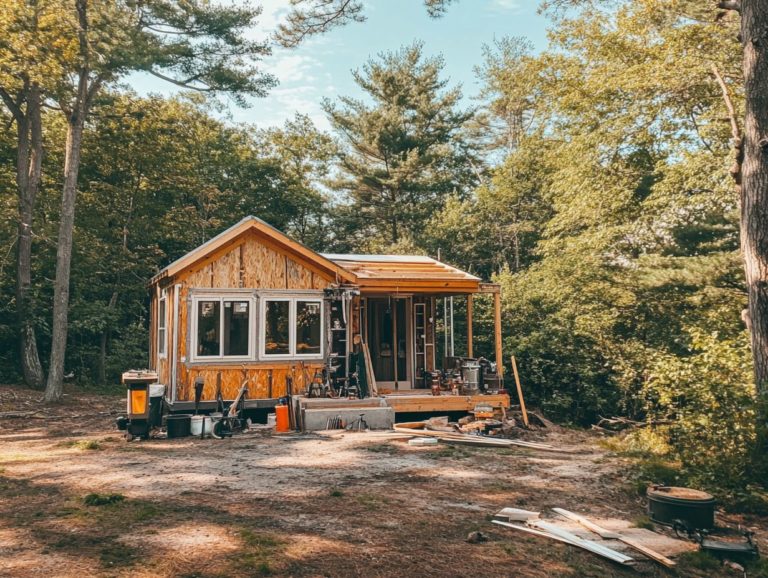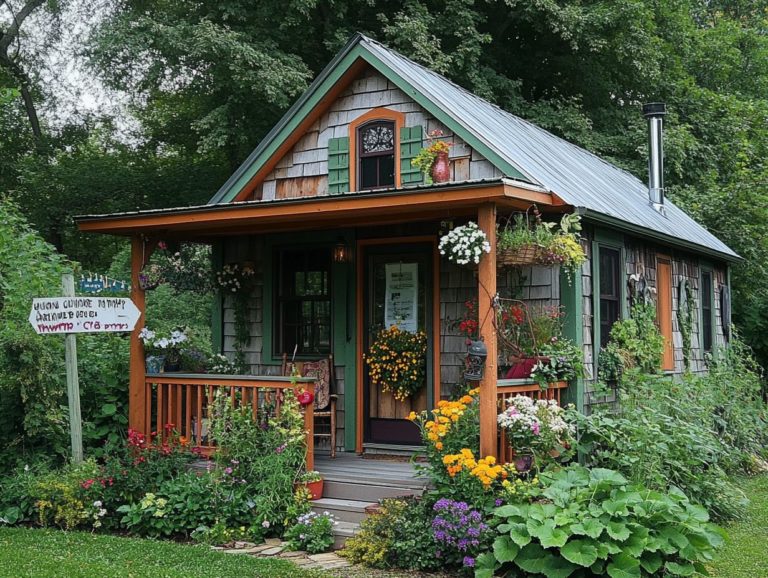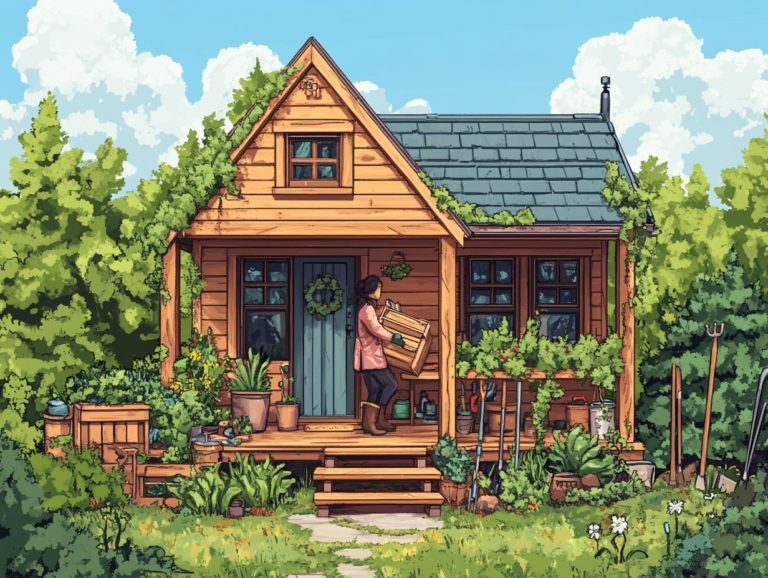Are Tiny Houses Safe in Storms?
As the tiny house movement continues to gain traction, you may find yourself pondering the safety of your compact home during severe weather events. This article delves into the risks and concerns linked to tiny houses in storms, providing you with valuable insights into design considerations and building techniques that can bolster safety.
It will also guide you on how to prepare for storms, covering essential emergency protocols and evacuation plans. It also debunks common misconceptions, empowering you to make informed decisions about tiny living in storm-prone areas.
Contents [hide]
- Key Takeaways:
- The Safety of Tiny Houses in Storms
- Design Considerations for Storm-Proof Tiny Houses
- Preparing for a Storm in a Tiny House
- Common Misconceptions About Tiny Houses and Storms
- Frequently Asked Questions
- Are Tiny Houses Safe in Storms?
- How are Tiny Houses Built to Withstand Storms?
- Can Tiny Houses Be Equipped with Storm Shelters?
- What Precautions Should I Take to Make My Tiny House Storm-Ready?
- Are There Any Special Considerations for Tiny Houses in Tornado-Prone Areas?
- What Should I Do if a Storm is Approaching and I Live in a Tiny House?
Key Takeaways:
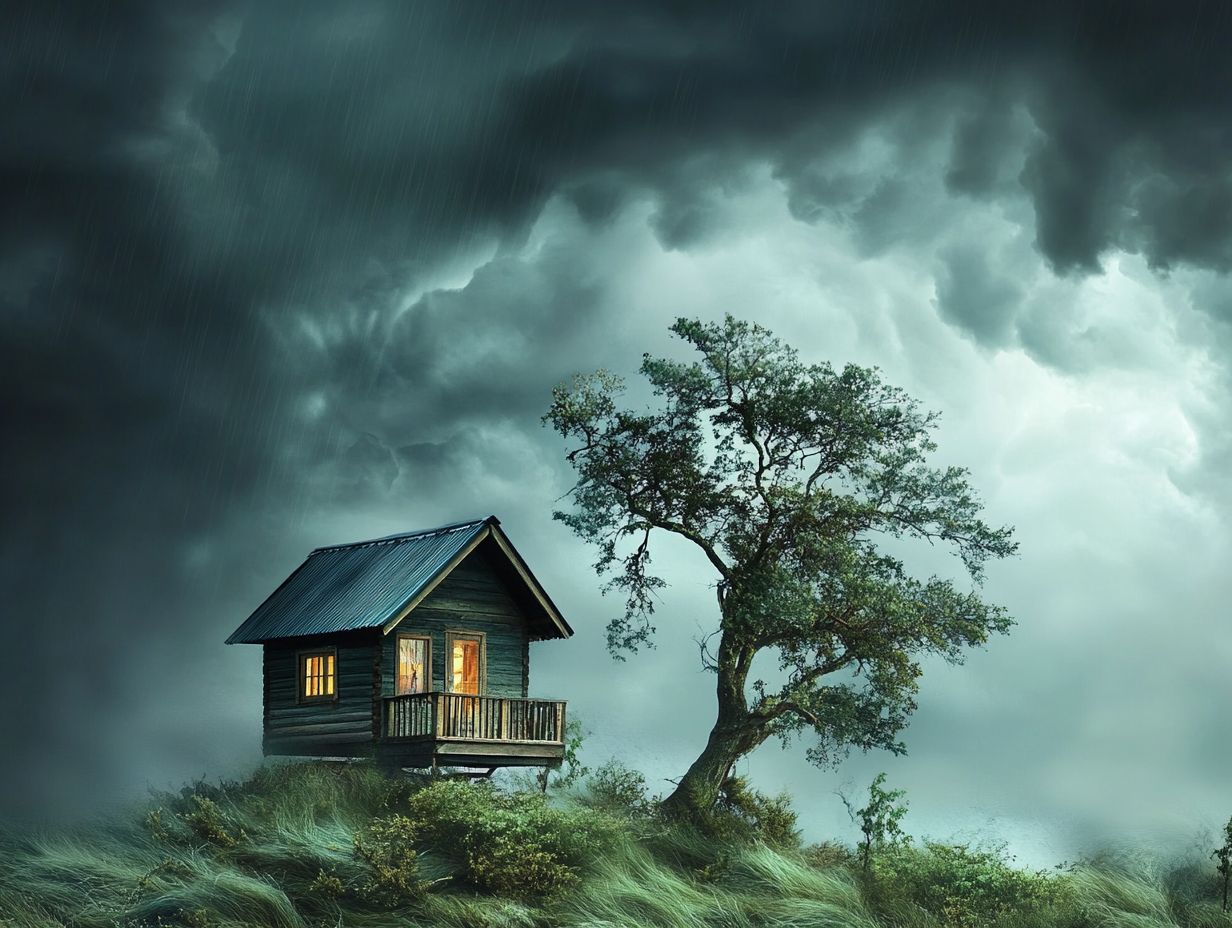
- Tiny houses can be safe in storms if you design and prepare properly.
- Using strong materials like reinforced frames can make your home much safer in bad weather.
- Be ready with emergency plans and know when to evacuate if you live in a storm-prone area.
The Safety of Tiny Houses in Storms
The safety of tiny houses during storms is a critical consideration, especially with the rising frequency of extreme weather events like hurricanes and severe storms. While tiny houses are often admired for their minimalist design and mobility, it s essential for you to have a comprehensive understanding of local building codes and safety measures to ensure they can withstand these challenges.
Key elements like hurricane ties special fasteners that help keep your house together in strong winds and structural reinforcements play a vital role in enhancing safety. These features make certain that these homes remain secure and habitable even when nature unleashes its fury.
Understanding the Risks and Concerns
Understanding the risks and concerns associated with tiny houses in extreme weather is essential for you, whether you’re a homeowner or a builder. Factors like potential flooding, high winds, and local building codes are significant in determining how comfortably and safely you can live in a tiny house during storms.
These risks can vary dramatically depending on your geographic location. It’s vital for anyone considering a tiny house to be aware of the specific weather challenges in their area. Local authorities typically establish stringent building codes designed to tackle these hazards, ensuring that structures can withstand severe conditions.
By planning ahead and closely monitoring weather forecasts, you can greatly influence the safety of tiny house living. This allows you to make informed decisions about when to relocate or reinforce your home. Proactively addressing these concerns boosts your overall resilience and security and fosters a more sustainable living environment.
Design Considerations for Storm-Proof Tiny Houses
When designing storm-proof tiny houses, you must consider a range of factors that enhance both durability and safety in adverse weather conditions. A carefully considered approach to shapes that cut through the wind can effectively minimize wind resistance and mitigate potential damage, especially in the case of a hurricane.
Selecting robust building techniques and materials is essential to ensure structural integrity. By incorporating features that align with local building codes and utilizing advanced storm-proofing methods, you can significantly bolster your tiny house’s resilience against extreme weather phenomena.
Building Techniques and Materials
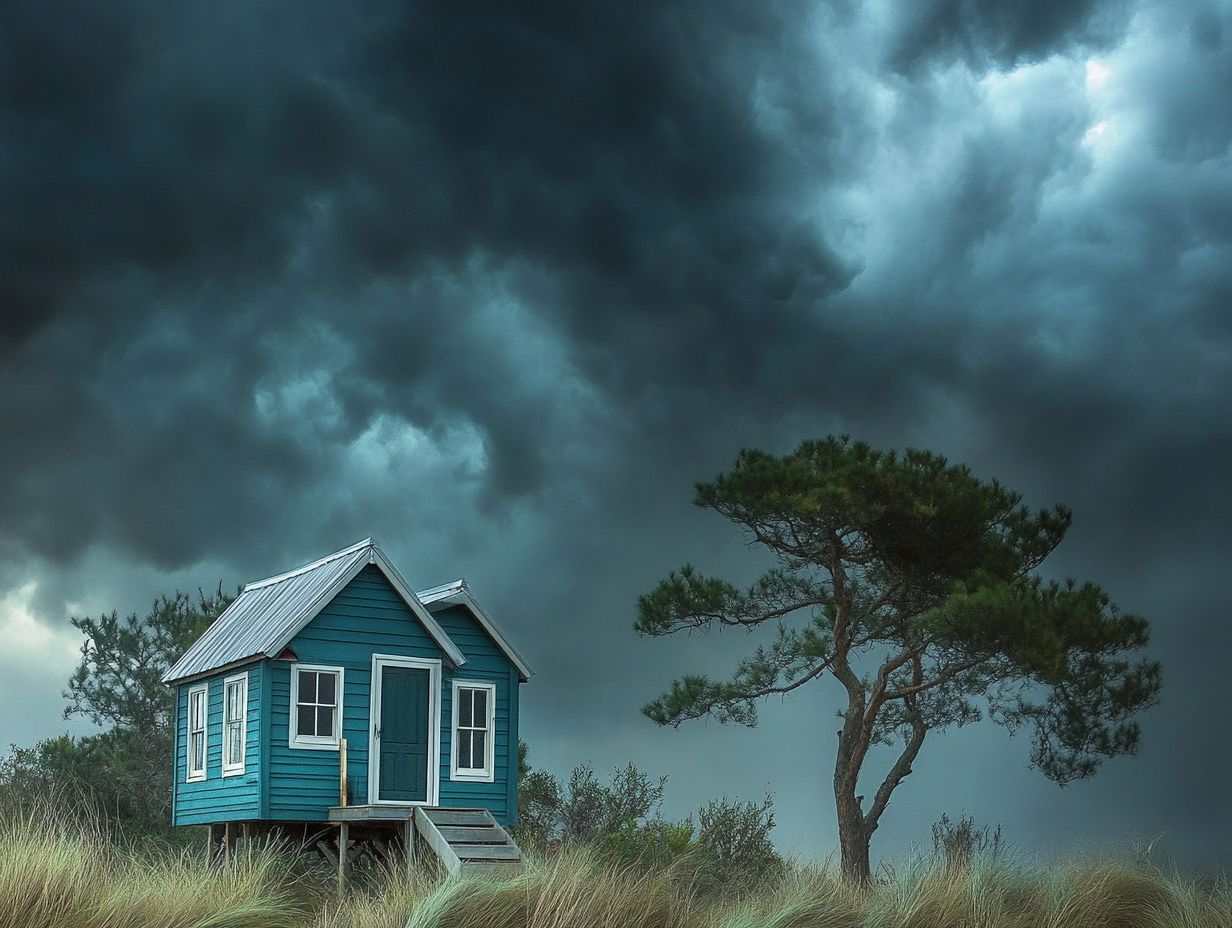
Building techniques and materials are crucial in constructing tiny houses, especially in areas prone to severe weather. By utilizing high-grade materials and employing techniques like underground construction, you can fortify your structure against extreme winds and flooding. Adding hurricane ties will further enhance the strength of the joints and connections in the framework.
In addition to these methods, incorporating impact-resistant windows is essential. These windows can significantly reduce the risk of breakage during storms, enhancing the safety of the occupants. The choice of roofing material is equally important; reinforced roofing not only offers durability but is also capable of withstanding the heavy weight of snow or debris propelled by high winds.
By embracing these advanced building practices, you ensure that your compact living space is not just cozy but also resilient against nature’s challenges. This provides you with peace of mind in storm-prone regions.
Start planning today to ensure your tiny house is storm-ready!
Preparing for a Storm in a Tiny House
Preparing for a storm in a tiny house requires a proactive mindset. It s important to have established emergency protocols and a meticulously stocked storm kit. Keep a vigilant eye on weather forecasts to anticipate severe conditions and implement essential precautions.
This includes securing your roof and ensuring that all safety measures are firmly in place before the storm arrives.
Emergency Protocols and Evacuation Plans
Establish effective emergency protocols and evacuation plans. As a tiny house resident, especially in storm-prone areas, develop clear guidelines outlining when and how to evacuate. Consider the logistics of moving your tiny house quickly and safely to a designated evacuation site if needed.
Start by assessing potential risks and identifying suitable evacuation routes for your compact dwelling. Craft a comprehensive communication plan to ensure you have a reliable method for receiving alerts and sharing information during emergencies.
It’s crucial to have a checklist for securing your belongings and preparing your tiny house for transport. This checklist should include:
- Anchoring it for stability
- Determining the best time to leave based on weather forecasts
By taking these proactive steps, you can ensure the safety of all occupants and the seamless relocation of your cherished living space.
Common Misconceptions About Tiny Houses and Storms
Misconceptions about tiny houses and their safety during storms often arise from a misunderstanding of modern building codes and ways to keep your tiny house safe from storms. Some believe tiny houses are inherently unsafe in extreme weather, overlooking significant advancements in design and materials that enhance their resilience and ensure compliance with local regulations.
Debunking Myths and Addressing Concerns
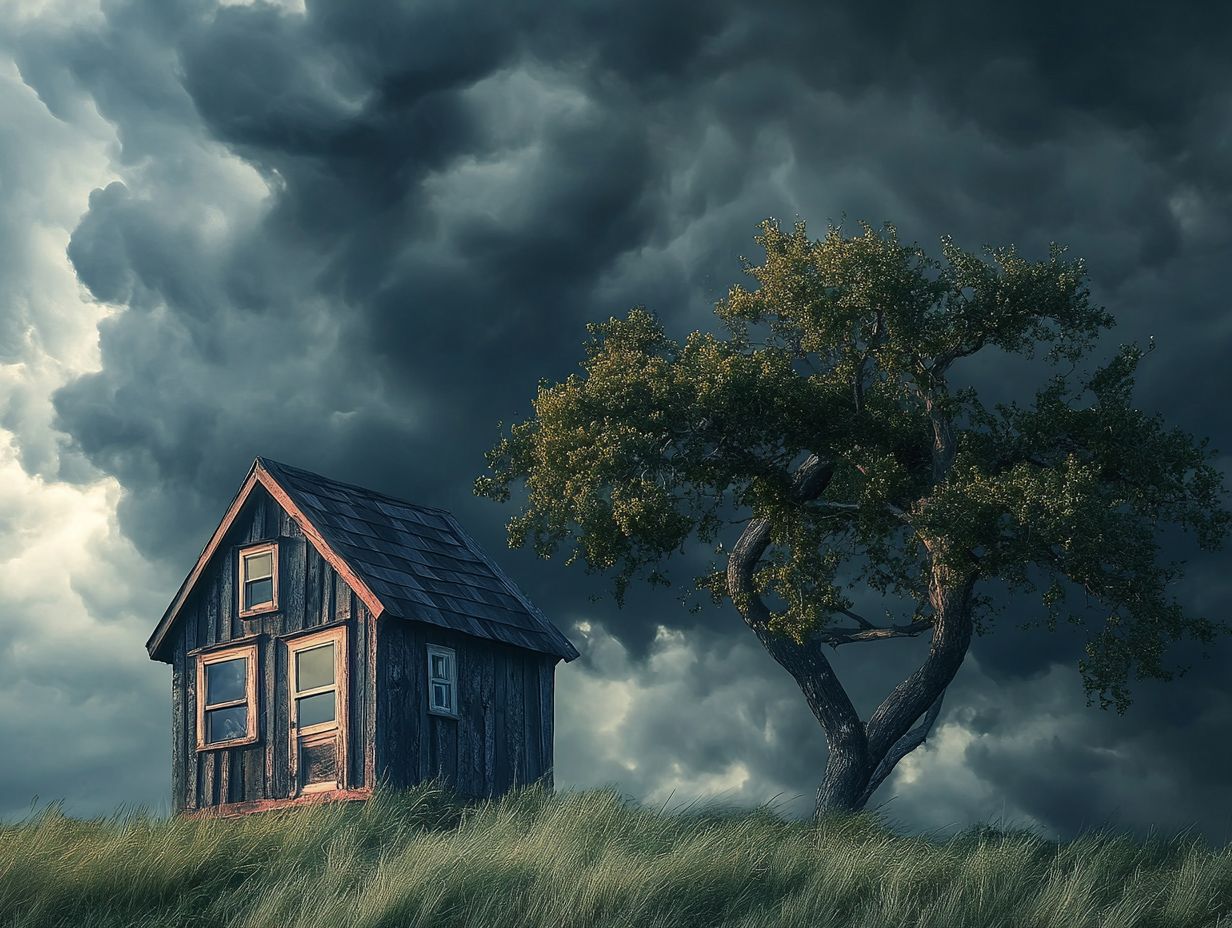
Debunking myths and addressing concerns about tiny houses in extreme weather is crucial for you as a potential buyer or builder. Many misconceptions suggest that tiny homes are inherently less safe than traditional ones. However, by adhering to building codes and utilizing scientifically-backed design practices, you can significantly reduce the risks associated with extreme weather.
Recognizing that these dwellings can be crafted with high-quality materials and built by skilled professionals helps alleviate fears regarding their structural integrity. Implementing safety measures like proper anchoring, reinforced roofing, and weather-resistant siding can enhance your tiny home s resilience against harsh conditions.
Familiarize yourself with local building codes. Compliance ensures your safety and maximizes protection from unforeseen natural events. Educate yourself to confidently embrace the tiny house lifestyle while making informed choices that prioritize your safety and well-being.
Frequently Asked Questions
Are Tiny Houses Safe in Storms?
Yes, tiny houses can be safe in storms as long as they are built properly and with the right materials. Just like traditional homes, they can withstand storms if constructed correctly and maintained regularly.
How are Tiny Houses Built to Withstand Storms?
Tiny houses are built with durable materials, such as steel frames, hurricane straps, and impact-resistant windows. These features reinforce the structure, making it more resistant to strong winds and heavy rain.
Can Tiny Houses Be Equipped with Storm Shelters?
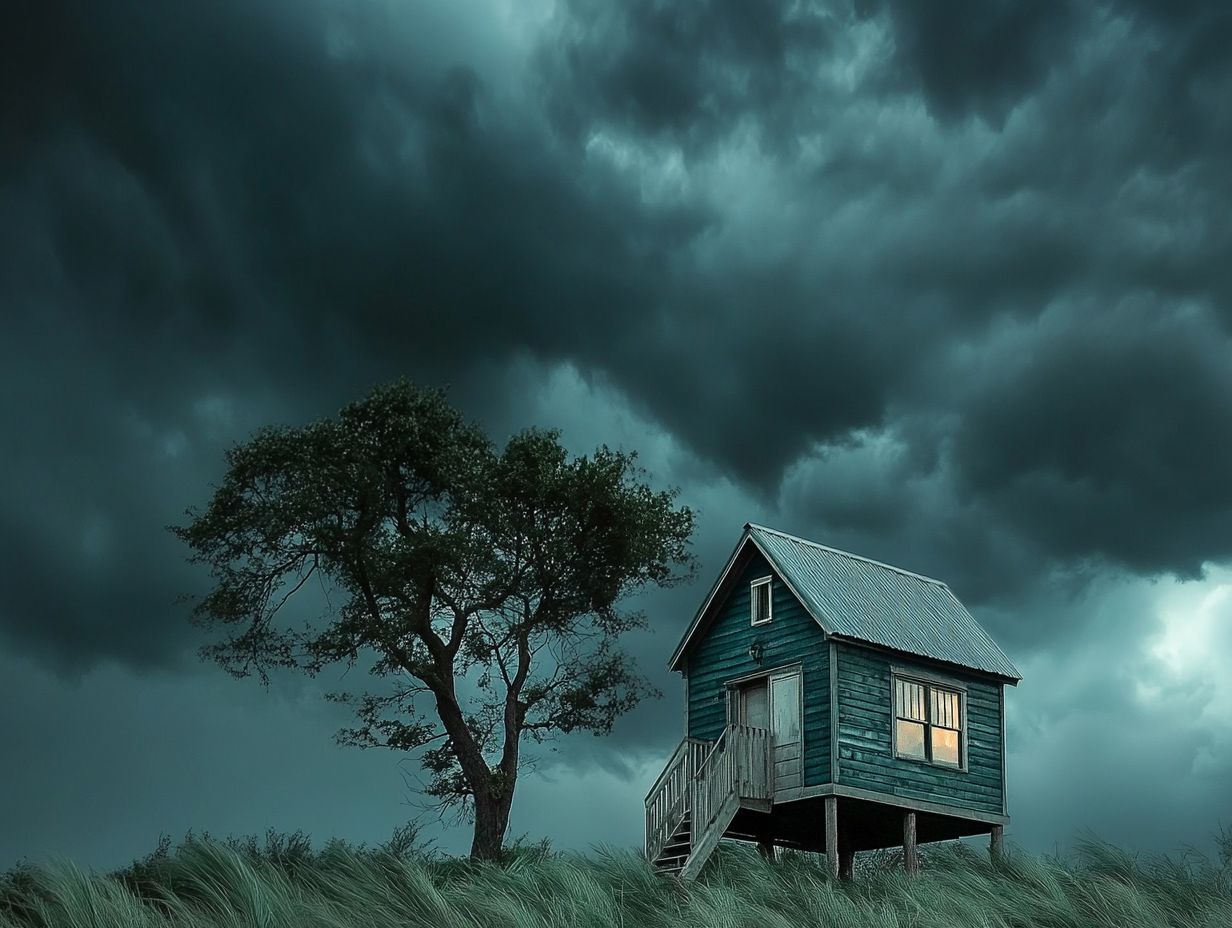
Yes, it is possible to install a storm shelter in a tiny house, similar to a traditional home. Due to limited space, the shelter may be smaller and have a lower capacity. Consult a professional to ensure the shelter meets safety standards.
Don t wait until it s too late! Start preparing your tiny house now.
What Precautions Should I Take to Make My Tiny House Storm-Ready?
To prepare your tiny house for storms, add straps or anchors to secure it to the ground. It’s also important to regularly trim trees and branches that may pose a threat.
Make sure your tiny house is well-insulated to handle extreme weather conditions.
Are There Any Special Considerations for Tiny Houses in Tornado-Prone Areas?
If you live in a tornado-prone area, consult a professional and follow local building codes to ensure your tiny house can withstand strong winds and debris. You might need to add extra support for safety.
What Should I Do if a Storm is Approaching and I Live in a Tiny House?
When a storm approaches, follow the same safety precautions as you would in a traditional home. Seek shelter in a sturdy building or storm shelter, and avoid staying in your tiny house during the storm.
Have your emergency plan ready now and prepare for any potential hazards!

